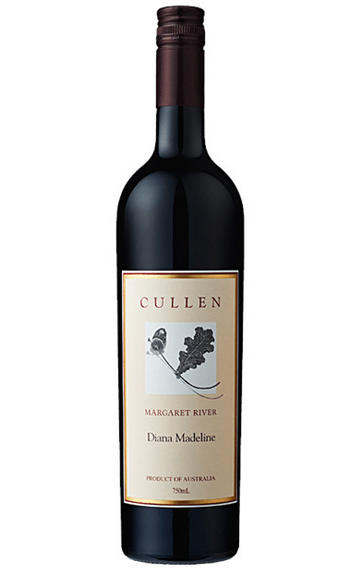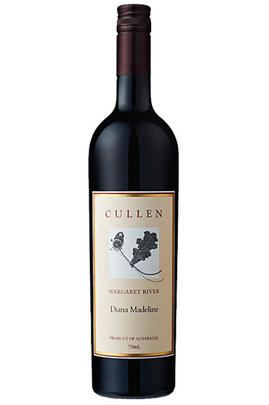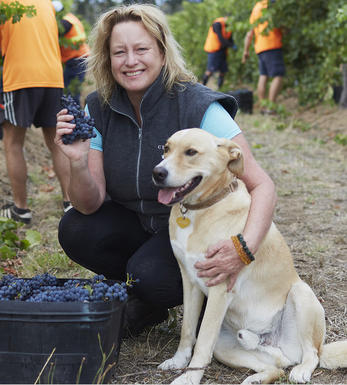
2019 Cullen, Diana Madeline, Margaret River, Australia

Critics reviews
Deep dark red. Elegant aroma which is marked by cassis and a light leafiness and a suggestion of Cabernet Franc's characteristic blackcurrant-leaf quality. Dry, refined tannins giving a dry mineral character. Plush and full in the mouth, the mineral character as much in the tannins as in flavour. ‘Toast to mum’, says Vanya Cullen. Smoky but not reductive. Layers of paper-fine tannins. Elegant. Opens up to a slight note of curry leaf. Or is it tobacco, or both? Very, very dry without being drying. Ultimate in refinement.
Drink 2022 - 2033
Julia Harding MW, JancisRobinson.com (July 2021)
87% Cabernet Sauvignon, 7% Merlot, 3% Cabernet Franc, 2% Malbec, 1% Petit Verdot. Matured in 45% new French oak for 15 months.
Deep red colour with strong purple reflections. The bouquet is fresh and youthful but surprisingly complex in its youth, revealing violet, blueberry, raspberry and any number of other berry fruit aromas, cherry and dark plum, too, with oak influences evident but discreetly tucked into the wine. It's full-bodied and firm, the tannins perhaps a little more grippy and assertive than usual in this wine, the structure formidable and undoubtedly will endow it with long ageing prospects. Great intensity, power and drive through the palate, the finish long and super-satisfying. A very concentrated DM. It can be enjoyed now but should be cellared for best results.
Drink 2023 - 2049
Huon Hooke, TheRealReview.com (February 2021)
About this WINE

Cullen Wines
Winemaker and environmentalist Vanya Cullen, a strong believer in biodynamic viticulture, has harnessed the rhythms of the cosmos, Earth’s energy and vitality to ‘achieve greater individuality of site through working with nature rather than against it’. In 1966 her parents Dr Kevin and Diana Cullen planted a trial one-acre (0.4-hectare) vineyard on their sheep and cattle property at Wilyabrup in the Margaret River.
A new vineyard was planted in 1971 with further plantings in 1976 and 1988. The low-cropping, 28-hectare, dry-grown estate is a riot of colour and biodiversity. Vanya Cullen is convinced that biodynamic principles have shaped the quality, character and consistency of the fruit. Her devotion to ‘quality, integrity and sustainability’ in vineyards and winery have resulted in something extraordinary and special. The Diana Madeline Cabernet Merlot is all about vineyard character, finesse, flavour and longevity.
The hand-harvested grapes are picked when the fruit has achieved optimum tannin ripeness, flavour development and acid balance, usually when the moon is running high. The introduction of sorting tables and minimal handling has further improved quality. Between 10 and 50% of the wine is partially barrel fermented; the rest is given extended maceration before further maturation in 30% new, tightly-grained French oak

Margaret River
Located on the most south-westerly point of Australia, three hours’ drive south of Perth, the Margaret River region sprang to life during the 1960s and 1970s as a result of Professor Harold Olmo’s and Dr John Gladstone’s research into the region’s viticultural potential. Consequently Vasse Felix was planted in 1967, Moss Wood in 1970 and Cullen in 1971. Since then the plantings have grown exponentially, while the number of wineries has increased six-fold. This explosion of wineries has perhaps been to the detriment of the wine quality.
Bounded to the west by the Indian Ocean and the 90km Cape Naturaliste to Cape Leeuwin promontory, the region enjoys a benign if damp maritime climate in which the vines rarely shut down, causing disrupted flowering (exacerbated by strong, westerly sea winds). Over the growing season it’s 16 percent hotter than in Coonawarra and 7% than the Médoc.
The Cape ridge is made up of lateritic clay topsoils over weathered granite and gneiss, giving fruit with a relatively high pH. Cabernet Sauvignon is the most fancied variety,producing a lush, early drinking style, followed by Shiraz, Chardonnay and Sémillon.
Recommended Producers: Cullen, McHenry Hohnen Vintners, Moss Wood, Cape Mentelle and Voyager Estate.

Cabernet Sauvignon Blend
Cabernet Sauvignon lends itself particularly well in blends with Merlot. This is actually the archetypal Bordeaux blend, though in different proportions in the sub-regions and sometimes topped up with Cabernet Franc, Malbec, and Petit Verdot.
In the Médoc and Graves the percentage of Cabernet Sauvignon in the blend can range from 95% (Mouton-Rothschild) to as low as 40%. It is particularly suited to the dry, warm, free- draining, gravel-rich soils and is responsible for the redolent cassis characteristics as well as the depth of colour, tannic structure and pronounced acidity of Médoc wines. However 100% Cabernet Sauvignon wines can be slightly hollow-tasting in the middle palate and Merlot with its generous, fleshy fruit flavours acts as a perfect foil by filling in this cavity.
In St-Emilion and Pomerol, the blends are Merlot dominated as Cabernet Sauvignon can struggle to ripen there - when it is included, it adds structure and body to the wine. Sassicaia is the most famous Bordeaux blend in Italy and has spawned many imitations, whereby the blend is now firmly established in the New World and particularly in California and Australia.


Buying options
Add to wishlist
Description
Red cherry with youthful purple hues. Violets, blackberry, mulberry and spiced cedar swarm the glass. The palate is brilliantly weighted, showcasing both power and elegance, this is a wine with layers upon layers, with fine tannins that glide pleasantly revealing notes of plum, cassis and chocolate. Dangerously tempting now and will age for decades.
Drink 2025 - 2040+
Joshua Friend, Senior Account Manager, Berry Bros. & Rudd
wine at a glance
Delivery and quality guarantee